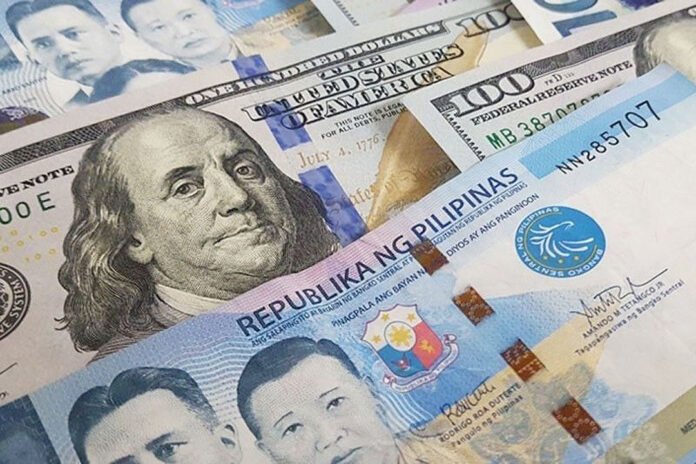MANILA, Philippines — According to Bangko Sentral ng Pilipinas (BSP) Governor Eli Remolona Jr., the recent depreciation of the Philippine peso, which is approaching a 17-month low, is not large enough to meaningfully alter inflation expectations or demand quick rate adjustments.
In a news conference, Remolona said, “Our primary scenario is a potential easing in the fourth quarter. However, if circumstances deteriorate beyond our expectations, this could be deferred to the first quarter of 2025.”
He emphasized that the peso’s performance is a reflection of global factors, including geopolitical tensions in the Middle East and strong statements from the US Federal Reserve, rather than a sign of weakness.
Remolona continued, “The issue lies more with the strength of the US dollar than the weakness of the peso. Unless currency movements are excessively abrupt, we generally allow market adjustments to occur.”
The Philippine peso fell 19.2 centavos on Tuesday, breaking through the 57 to $1 line and closing at its lowest level since November 22, 2022.
Remolona stated, “The extent of peso depreciation has not been substantial enough to significantly alter inflation expectations. Thus, the current impact on our monetary policy remains limited.” in reference to the influence on monetary policy.
The head of the BSP said that a rate hike this year would only be taken into consideration if inflation accelerates beyond forecasts or if inflation expectations significantly rise.
“We are currently in a tight position. With the benchmark rate at 6.50 percent, it is already effective in its role,” Remolona said.
After raising rates from May 2022 to October 2023 in an effort to reduce inflation and stabilize the peso, the BSP kept its benchmark rate at 6.50 percent for the fourth straight meeting in April.
The Monetary Board, which sets interest rates, will convene again on May 16.
Short-term projections call for more peso weakness in the face of volatile forex markets, but BMI Country Risk & Industry Research believes that once market emotions subside and the Fed starts adjusting interest rates, the currency will stabilize.
Long-term outlooks, however, point to continued depreciation because to growing inflation and significant current account deficits; by the end of 2025, BMI’s analysis projects that the peso might fall to 57.20 to $1.
Over the next five years, the peso’s strength against the US dollar may be hindered by the Philippines’ higher inflation rate than the US, which is predicted to average roughly 3.9 percent compared to the US’s 2.5 percent.
Increased foreign direct investments should boost the peso despite anticipated policy modifications by major central banks, even as headline inflation remained within the BSP’s target range of two to four percent, reaching 3.7 percent in March and average 3.3 percent in the first quarter.




